Clean Out Your Inbox Day 2: WHEN
 A major reason your inbox gets overloaded is simply because you haven’t ‘made a decision’ about the next action needed for each e-mail. One of the keys to solving this problem is to control WHEN you look at the inbox.
A major reason your inbox gets overloaded is simply because you haven’t ‘made a decision’ about the next action needed for each e-mail. One of the keys to solving this problem is to control WHEN you look at the inbox.
E-mail as an interruption
You see, most of your e-mail arrives as an interruption, when you’re working on other, higher priority tasks. As a result, you don’t have the time right now to do the thinking needed to ‘make a decision’. So the e-mail gets left in the inbox till sometime later.
By the time you get back to that e-mail, it has become one of dozens or even hundreds of other emails that you likewise haven’t yet made a decision about. So the inbox gets fuller and fuller and you never seem to be able to catch up. The root of the problem is that you haven’t ‘made a decision’.
So what can you do about this?
It might help to realise that the word ‘decide’ comes from the family of words that includes suicide, homicide, genocide, pesticide, insecticide etc and essentially means ‘to kill off’. So when you don’t make a decision about an e-mail, you don’t deal with it (or ‘kill it off’) and it lingers in the inbox.
Processing e-mail is a decision-making task. It takes time. It takes energy. It takes concentration. You rarely have enough of these available at exactly the time an e-mail arrives. The tendency to allow e-mail as an interruption often results in trying to multi-task and a host of counter-productive impacts.
Schedule time for processing e-mail
You are far more capable and likely to ‘make a decision’ if you set aside a regular, scheduled block of ‘single-tasking’ time to focus specifically on processing your e-mail. For most of us, 3 or 4 times a day is sufficient (you can vary this according to your role or the sort of day that you’re having).
In this way, you’ll have the time, energy and attention to think clearly about each e-mail, ‘make a decision’ on the next action needed, and then clear it out of the inbox.
So, the key to managing your inbox effectively is to control WHEN you look at it.
Tomorrow, we’ll discuss the 4D method that allows you to ‘make a decision’ the first (and only) time you handle each e-mail in the inbox.
All the best!
Steuart Snooks
